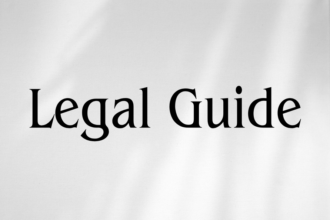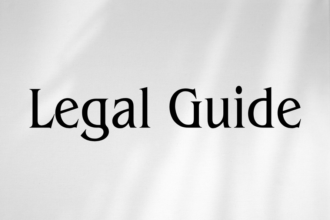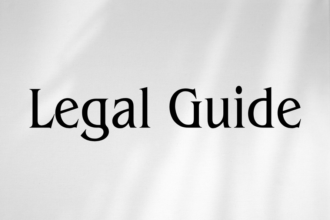Introduction: The Critical Role of GACA Safety Audits and Regulatory Inspections in the UAE
The landscape of aviation and related operations in the United Arab Emirates (UAE) is governed by a commitment to the highest global safety standards. As the region solidifies its status as an international transportation and logistics hub, the oversight of aviation safety systems becomes ever more relevant. At the heart of this oversight is the General Authority of Civil Aviation (GACA) in the Kingdom of Saudi Arabia—a regulatory body whose safety audits and inspections have both direct and indirect implications for UAE businesses operating within, into, or through Saudi airspace. Understanding the nature and requirements of GACA safety audits and regulatory inspections is not only crucial for airlines but also logistics providers, airport operators, and businesses within integrated supply chains.
This article provides a comprehensive legal analysis of GACA’s safety audits and regulatory inspection frameworks, addressing their ramifications for UAE enterprises, especially given recent legal updates, cross-border regulatory harmonization, and heightened enforcement trends. Our expert guidance will outline compliance strategies, compare regulatory frameworks, and deliver actionable recommendations to ensure readiness for audits, mitigate risk, and maximize operational efficiency—all with reference to authoritative UAE legal sources and the latest official decrees.
Table of Contents
- Aviation Safety in the GCC: Context and Legal Framework
- The Scope and Authority of GACA Safety Audits
- Key Laws, Regulations, and Official Guidance
- Audit Process, Inspection Protocols, and Legal Requirements
- Comparing Old and New Regulatory Standards: 2023–2025 Updates
- Implications and Risks for UAE Businesses
- Practical Compliance Strategies for Organizations
- Case Studies: Navigating GACA Audits in Practice
- Conclusion and Future Outlook
Aviation Safety in the GCC: Context and Legal Framework
Strategic Importance of Aviation Safety Regulation in the GCC
The Gulf Cooperation Council (GCC) states, including the UAE and Saudi Arabia, have invested heavily in aviation infrastructure to establish themselves as global gateways. The regulatory frameworks that surround these sectors are shaped by international standards, most notably those set by the International Civil Aviation Organization (ICAO), along with region-specific regulations.
In the UAE, oversight rests primarily with the General Civil Aviation Authority (GCAA), acting pursuant to Federal Law No. 20 of 1991 and its amendments—supported by Executive Regulations and frequent Cabinet Resolutions. Coordination with GACA is vital for UAE businesses operating across borders or engaging with Saudi-registered carriers, cargo, or personnel, as compliance failures can result in severe legal and operational repercussions.
Legal Pillars and Cross-Jurisdictional Relevance
While the UAE and Saudi Arabia each maintain their own aviation oversight bodies, the increasing integration of air logistics and shared airspace agreements have heightened the importance of mutual compliance. Notably, the GACA’s regulatory reach can apply to UAE entities in several scenarios:
- Operation of flights to/from KSA by UAE-registered airlines
- UAE-based logistics companies handling goods bound for or transiting Saudi airspace
- Airport partners providing ground handling or MRO (maintenance, repair, overhaul) services
- Personnel holding dual authorizations (UAE and KSA) who must comply with the strictest regulatory standard applicable
These cross-border activities necessitate a clear understanding of the legal requirements and inspection regimes overseen by GACA.
The Scope and Authority of GACA Safety Audits
Mandate of GACA
The General Authority of Civil Aviation (GACA) derives its mandate from Royal Decree No. M/44 of 2005 (as amended), which tasks the Authority with regulating and supervising all aspects of civil aviation safety, air navigation, and security within the Kingdom. The Authority’s remit includes certification, licensing, inspection, accident investigation, and, crucially, the conduct of periodic safety audits of operators and service providers.
Inspection Types and Frequency
GACA executes a broad spectrum of safety and regulatory inspections, including:
- Scheduled Safety Audits: Calendar-based audits of airlines, airport operators, and service providers, focusing on operational safety systems, personnel qualifications, and maintenance records.
- Unannounced Inspections: Spot-checks in response to complaints, safety incidents, or intelligence, examining real-time compliance and incident response procedures.
- Certificated Entity Audits: For initial certification, renewal, or expansion of activities, including specific inspections for foreign carriers operating in Saudi airspace or at Saudi airports.
- Follow-Up (Corrective Action) Inspections: To verify implementation of previously issued corrective action plans (CAPs).
For UAE entities, these audits may take place directly (at KSA locations) or indirectly (by GCAA coordination), and commonly include joint inspections or recognition of equivalent standards under bilateral agreements.
Key Laws, Regulations, and Official Guidance
Primary Legal Instruments
The main regulatory texts underpinning GACA’s audit and inspection regime are:
- Royal Decree No. M/44 of 2005 (Civil Aviation Law)
- GACA Safety and Regulatory Guidance Manual (SRGM), Rev. 2023
- GACA Part 129 (Foreign Air Carrier Certification), aligning with ICAO Annex 6
- GACA Circular No. 18/2023 on Enhanced Audit Reporting and Corrective Action Procedures
- Corresponding GCC and UAE Texts: UAE Federal Law No. 20 of 1991; UAE Civil Aviation Regulations, Part X
These instruments set out the audit methodologies, rights and obligations of inspected entities, appeal mechanisms, and enforcement processes. UAE legal practitioners should also monitor updates from the Federal Legal Gazette and Ministry of Justice for the latest adopted norms, especially regarding cross-border enforcement and mutual recognition.
Key Provisions for Compliance
- Mandatory record keeping (five-year minimum for operational data)
- Obligation to provide unrestricted access for GACA inspectors
- Immediate reporting of significant safety events or discoveries during audits
- Timely development and submission of corrective action plans
- Maintenance of up-to-date manuals, procedures, and training evidence in English and Arabic
Audit Process, Inspection Protocols, and Legal Requirements
Typical Audit Workflow
A GACA safety audit generally follows a predictable structure, detailed in the GACA SRGM and mirrored in UAE GCAA protocols for regulatory alignment:
- Advance Notification: Scheduled audits are usually pre-notified (minimum 14 days), except where risk profile warrants surprise inspections.
- Opening Meeting: Inspectors outline the audit scope, standards to be assessed, and documentation required.
- Document Review and Physical Inspection: Thorough review of manuals, training records, incident logs, and on-site observations (aircraft, airside, and landside operations).
- Personnel Interviews: Direct questioning of safety managers, maintenance staff, crew, and compliance personnel.
- Findings Report: Delivery of a written report, classifying findings by severity (Level 1: Immediate Threat, Level 2: Systemic Deficiency, Level 3: Minor).
- Corrective Action Plan (CAP): Entity must respond with a CAP within up to 30 days (Level 1) or as specified for lesser findings.
- Follow-Up and Verification: Post-CAP inspections or evidence review to ensure closure of identified gaps.
Rights and Legal Obligations during Inspections
- Entities have the right to appoint a legal representative during audits.
- Appeals against findings must be lodged within 14 days of notification, citing relevant legal provisions.
- Non-cooperation or obstruction may attract immediate penalties, suspension of certification, or blacklisting under GACA and GCAA protocols.
Comparing Old and New Regulatory Standards: 2023–2025 Updates
Notable Updates Introduced by GACA and UAE Law
| Topic | Previous Standard (Pre-2023) | Updated Standard (2023–2025) |
|---|---|---|
| Audit Frequency | Biennial audits for most carriers | Annual audits; risk-based interim inspections for high-risk profiles |
| Corrective Action Timeline | 60 days to submit/implement CAPs | 30 days maximum for major findings; immediate action for imminent threats |
| Record Retention | 3-year minimum | 5-year minimum, with secure cloud archiving requirements |
| Transparency | Summary reports, limited distribution | Detailed findings published (anonymized), industry benchmarking |
| Penalties for Obstruction | Fines only | Immediate suspension or blacklisting; higher fines; potential criminal referral |
| Cross-border Recognition | Ad hoc, non-formalized | Formal mutual recognition MoUs between GCAA and GACA |
Visual Suggestion:
(Consider supplementing this section with a flow diagram illustrating the step-by-step audit and corrective action process.)
Implications and Risks for UAE Businesses
Risks of Non-Compliance
The consequences of failing to comply with GACA safety audit standards can be severe and multi-jurisdictional in scope, impacting UAE businesses as follows:
- Operational Suspensions: Flights or services to KSA may be immediately suspended, with downstream effects on scheduling and revenue.
- Licensing Consequences: GCAA licensing in the UAE may be jeopardized due to the integrated nature of regulatory oversight.
- Financial Penalties: Significant fines under both Saudi and UAE law (in accordance with updated schedules released in 2024).
- Legal Liability: Directors, managers, and designated post-holders may be exposed to civil or criminal liability under Federal Law No. 20 of 1991 (UAE) and Royal Decree No. M/44 of 2005 (KSA).
- Reputational Harm: Public reporting of safety violations can lead to blacklisting, loss of customer contracts, and escalating insurance costs.
It is highly recommended that affected UAE businesses maintain a real-time legal compliance dashboard—accessible to compliance, legal, and C-suite functions—for continuous risk monitoring.
Example: Penalty Comparison Table (for suggested visual use)
| Infraction | Penalty (Pre-2023) | Penalty (Post-2023) |
|---|---|---|
| Failure to cooperate with inspectors | SAR 20,000 (KSA); AED 30,000 (UAE) | SAR 100,000–500,000; AED 250,000–1,000,000, plus potential suspension |
| Late CAP submission | SAR 10,000; AED 3,000 | SAR 50,000; AED 50,000 |
| Major safety violation | Warning + fine | Immediate suspension, blacklist, possible criminal investigation |
Practical Compliance Strategies for Organizations
Proactive Steps for Audit Readiness
- Integrated Compliance Manuals: Maintain up-to-date manuals aligning both GCAA and GACA requirements, ideally in dual languages.
- Regular Internal Audits: Monthly or quarterly self-inspections based on the latest GACA audit checklists (published in 2024), with documented corrective actions.
- Legal and Technical Training: Ensure all key personnel are trained in the latest regulatory changes, with regular refresher sessions and scenario exercises.
- Incident Reporting Protocols: Deploy secure, anonymous reporting tools to encourage disclosure of near-misses or concerns—protecting whistle-blowers as required by law.
- Digital Recordkeeping: Adopt cloud-based compliant record management systems, with disaster recovery and encryption features per GACA and GCAA guidance.
- Appoint a Designated Legal Liaison: Nominate an internal or external legal representative familiar with both UAE and Saudi aviation law to coordinate inspections and appeals.
Sample Compliance Checklist (for visual suggestion)
- Are current operation manuals fully compliant with GCAA and GACA?
- Are all training records accessible and updated within the last 6 months?
- Has a safety audit been conducted internally in the past quarter?
- Is management aware of recent updates under Circular No. 18/2023?
- Are corrective action responses reviewed by legal counsel prior to submission?
Establishing an Audit Response Protocol
When notified of an impending inspection, UAE organizations should:
- Convene an internal compliance team (legal, safety, operations).
- Review all relevant documentation and identify potential gaps, with remedial actions scheduled before the audit date.
- Brief all staff likely to be interviewed and stage mock interviews.
- Assign a single point of contact for the GACA inspection team.
- Prepare a rapid response plan for immediate findings or requests for additional data.
Case Studies: Navigating GACA Audits in Practice
Hypothetical Case Study 1: A UAE Logistics Provider Handling KSA-Transit Cargo
Scenario: A Dubai-based logistics firm routinely handles air cargo shipments destined for Riyadh. Following a routine GACA audit, inspectors flagged non-harmonized documentation and outdated incident logs.
Outcomes and Best Practices: The company coordinated with external legal advisors to rapidly update recordkeeping standards, sought formal recognition under new mutual MoUs, and implemented a corrective action plan—resulting in a ‘compliant’ designation for both UAE and KSA regulators, thus improving their regional reputation and client trust.
Hypothetical Case Study 2: UAE Airline Facing Cross-Border Licensing Suspension
Scenario: An Abu Dhabi-based airline was subject to both GCAA and GACA audits within a single quarter. Discrepancies in staff training documentation led to the risk of simultaneous license suspension.
Legal Analysis: Early engagement with legal counsel enabled the airline to present mitigating evidence, cross-reference records, and argue for phased corrective actions. Both GACA and GCAA accepted the proposals, and the airline avoided suspension, incurring only minor fines and committing to enhanced internal controls.
Takeaway:
Cross-jurisdictional legal expertise and readiness—even for hypothetical scenarios—are crucial to minimize regulatory risk.
Conclusion and Future Outlook
The increasingly dynamic landscape of GCC-wide aviation safety regulation requires that UAE businesses adopt a vigilant, proactive approach to regulatory compliance. GACA safety audits, alongside UAE GCAA protocols, are now more stringent, transparent, and thoroughly enforced, reflecting both international expectations and regional security imperatives. Legal updates issued in the 2023-2025 period—embodied in Royal Decree No. M/44 of 2005, GACA Circular No. 18/2023, and UAE Federal Law No. 20 of 1991—have raised the bar for audit preparation, rapid corrective action, and recordkeeping protocols.
To remain competitive and compliant, organizations must integrate continuous legal monitoring, staff training, and digital compliance solutions. Early engagement with both legal and operational experts, robust internal reviews, and a culture of transparency are key best practices. As regulatory frameworks evolve, UAE businesses should anticipate even closer coordination between regional authorities and be prepared for an increasingly harmonized, cross-border enforcement environment. Seeking professional legal advice and maintaining rapid-response audit readiness will be essential to future success in the sector.
Forward-Looking Recommendations
- Stay updated on evolving legal instruments via official sources: UAE Ministry of Justice, GCAA, and Federal Legal Gazette.
- Invest in ongoing compliance system upgrades and industry benchmarking.
- Engage qualified legal consultants for tailored readiness assessments and cross-jurisdictional audit advisory.
By embracing a forward-thinking approach and leveraging expert legal counsel, UAE businesses can ensure both regulatory compliance and operational excellence in the shifting aviation landscape.




